Hook: Every 40 seconds, someone in the U.S. has a heart attack. While blocked arteries often steal the spotlight, science reveals a silent accomplice: chronic stress. But can stress alone trigger this life-threatening event? Let’s dissect the evidence.
1. Short Answer: Yes, But Not How You Think
SWhen people ask, “Can stress cause a heart attack?”, they often imagine stress acting like a lightning bolt—striking a healthy heart out of nowhere. The reality is more insidious. Stress isn’t a direct killer like a blood clot blocking an artery. Instead, think of it as a master manipulator that:
- Corrupts your biology,
- Exploits existing weaknesses, and
- Turbocharges every other risk factor.
Here’s exactly how it works:
✅ Chronic Stress: The Slow Poison
When stress becomes relentless (work pressure, financial strain, caregiving), your body drowns in hormones like cortisol and adrenaline. This isn’t just “feeling tired”—it’s a biological siege:
- Damages arteries: Cortisol erodes the protective lining of blood vessels (endothelium), creating “cracks” where plaque takes root.
- Spikes blood pressure: Adrenaline forces your heart to pump harder, 24/7—like revving a car engine nonstop. This strains heart tissue and accelerates artery scarring.
- Promotes clots: Stress makes platelets hyperactive, turning blood from “smooth-flowing” to “sludgy.” This raises the risk of a clot sealing off a narrowed artery.
🧪 Science fact: A 2017 Lancet study tracked 200,000+ people and found those with high-stress jobs had a 13-22% higher heart attack risk—even after adjusting for diet/smoking.
✅ Acute Stress: The Instant Trigger
In people already at risk (hidden plaque, high BP), sudden trauma—like grief, rage, or terror—can be the match that ignites disaster:
- Plaque rupture: Stress hormones inflame vulnerable plaque in arteries, causing it to burst like an overfilled pimple.
- “Broken Heart Syndrome” (Takotsubo): A flood of adrenaline can literally stun the heart muscle, causing temporary failure (2% of “heart attacks” are actually this).
- Electrical chaos: Stress sparks arrhythmias like ventricular fibrillation—where the heart quivers uselessly instead of pumping blood.
⚠️ Real-world example: Heart attacks surge 2-3x higher after natural disasters (per American Journal of Cardiology).
🚫 The Critical Nuance Most Miss
Stress alone rarely causes a first heart attack in someone with pristine arteries. But if you have:
- Even mild plaque buildup (50% of adults over 45 do),
- Borderline high blood pressure, or
- Prediabetes/metabolic issues…
Stress becomes the accelerant that ignites the tinder. It: - Inflames existing plaque → making rupture likely,
- Spikes BP → tearing unstable plaque walls,
- Fuels clotting → sealing the blockage.
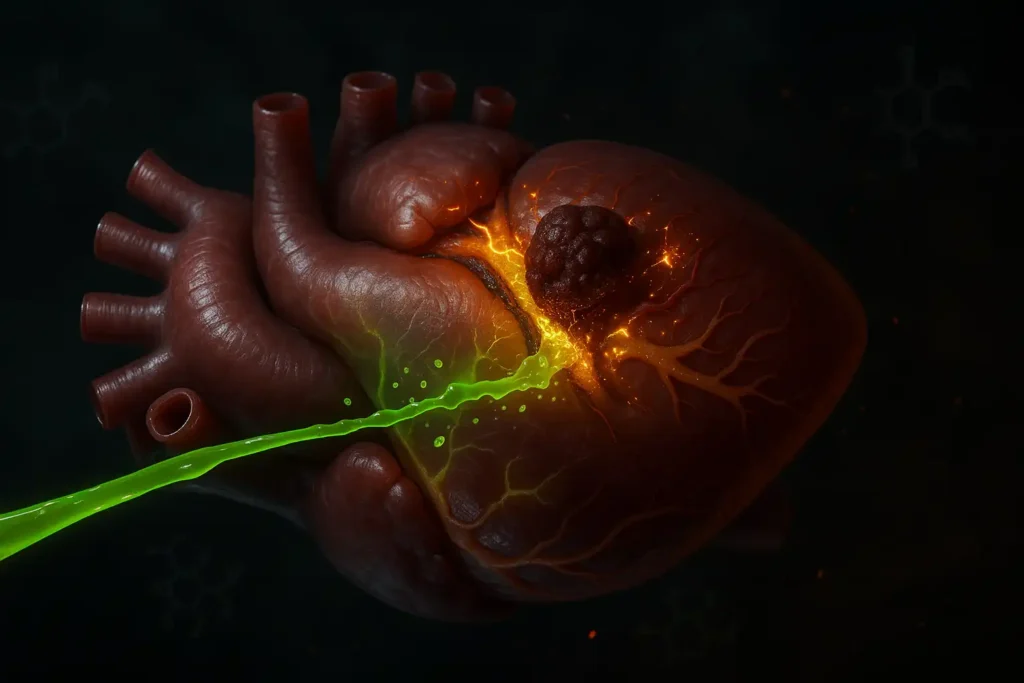
The Bottom Line: Gasoline on the Fire
🔥 Stress doesn’t create the kindling (plaque, hypertension, inflammation).
🔥 It douses it in gasoline—and hands the world a match.
This is why cardiologists say:
“Managing stress isn’t ‘self-care’—it’s preventive medicine.”
2. The Stress Hormone Onslaught: Your Heart Under Attack
When stress strikes, your body deploys a biochemical SWAT team – cortisol, adrenaline, and norepinephrine. While essential for survival in acute crises, these hormones become silent saboteurs when chronically elevated. Below, we dissect their cardiac sabotage:
The Triple Threat: Hormonal Warfare on Your Heart
| Hormone | Immediate Attack | Long-Term Destruction | Biological Mechanism |
|---|---|---|---|
| Cortisol | ➔ Skyrockets blood sugar ➔ Inflames artery walls | Atherosclerosis (Artery Hardening) | Endothelial Assault: Erodes protective lining of blood vessels → allows LDL cholesterol to penetrate → triggers plaque formation → narrows arteries by up to 70% (Journal of the American College of Cardiology, 2020) |
| Adrenaline | ➔ Spikes heart rate to 150+ bpm ➔ Sends BP soaring | Heart muscle damage Arrhythmias | Cardiac Overdrive: Forces heart to work at 2x capacity → starves myocardium of oxygen → causes micro-tears in tissue → disrupts electrical signaling → risk of ventricular fibrillation |
| Norepinephrine | ➔ Thickens blood viscosity ➔ Activates clotting factors | Sudden artery blockage | Clot Catalyst: Triggers platelet “stickiness” → converts fibrinogen to fibrin → forms mesh-like clots in seconds → blocks blood flow to heart muscle |
⚠️ Critical Insight: These hormones don’t work in isolation. They form a deadly synergy – cortisol weakens artery walls, adrenaline strains the heart, norepinephrine plugs the leak with clots.
The 72-Hour Domino Effect: A Case Study
Imagine a high-pressure work deadline:
Day 1: Cortisol surges → blood sugar hits 180 mg/dL → artery inflammation begins
Day 2: Adrenaline keeps heart rate at 110 bpm (resting) → BP averages 150/95 → heart muscle fatigues
Day 3: Norepinephrine thickens blood → platelets cluster near inflamed plaque → micro-clot forms
💥 If plaque ruptures? That micro-clot can balloon into a full artery blockage in <60 minutes.
Landmark Evidence: The 27% Risk Boost
The Harvard/Mass General Nature (2014) study revealed:
- Chronically stressed individuals had overactive bone marrow → produced excess white blood cells
- These cells infiltrated arterial walls → accelerated plaque growth by 2.3x
- Result: 27% higher heart attack rate vs. low-stress peers – independent of diet or exercise
🧬 New Science Alert: 2023 research shows stress hormones alter gene expression in immune cells, creating “inflammatory memory” that persists for months (Circulation Research).
Why Your “Healthy” Stress Isn’t Safe
Even “motivating” stress (e.g., competitive work, intense exercise) becomes dangerous through:
- Cortisol residue: Levels take 4-6 hours to normalize after each spike → repeated spikes = perpetual inflammation
- Adrenaline stacking: Each surge leaves heart muscle slightly stiffer (diastolic dysfunction)
- Silent clotting: Norepinephrine elevates fibrinogen 24/7 → blood stays hypercoagulable
📉 Data Point: Office workers with “moderate stress” show 12% thicker carotid arteries after 5 years (European Heart Journal).
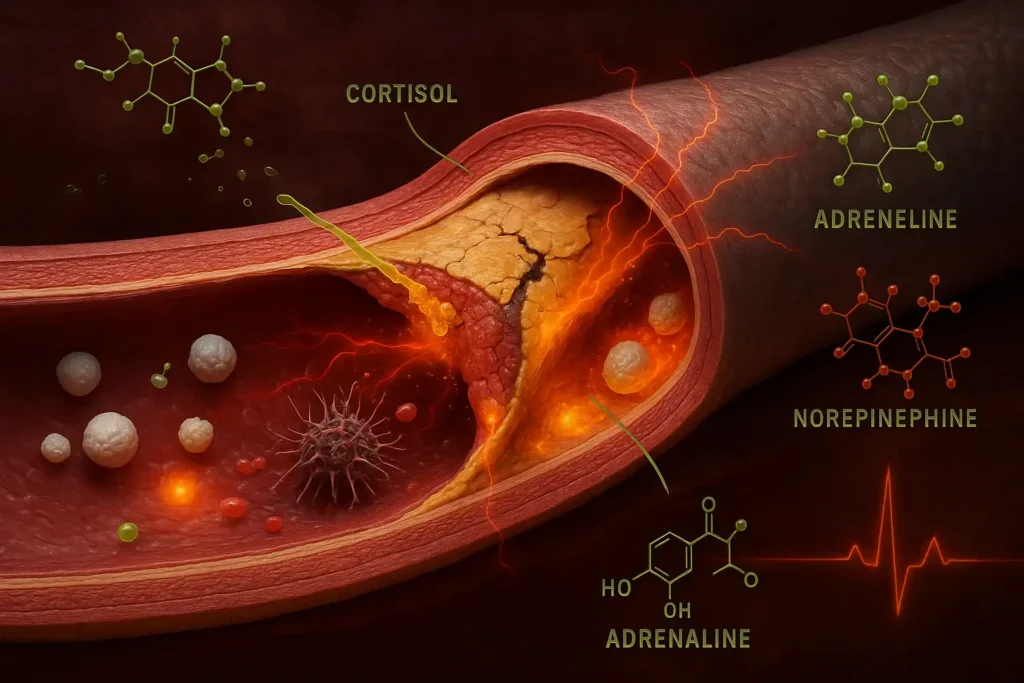
Visualizing the Attack
Imagine:
Your arteries as smooth highways → Cortisol shreds the asphalt (endothelium) → Adrenaline sends 18-wheelers speeding through potholes (high BP) → Norepinephrine dumps sticky tar (clots) that snag on cracks → TRAFFIC JAM = HEART ATTACK
The Defense Protocol: Neutralizing Hormonal Damage
| Hormone | Countermeasure | Scientific Backing |
|---|---|---|
| Cortisol | ▶️ 10-min morning sunlight ▶️ Ashwagandha supplementation | Lowers cortisol 28% in 8 weeks (Indian Journal of Psychological Medicine) |
| Adrenaline | ▶️ Box breathing (4-4-6-2 rhythm) ▶️ Cold face immersion | Cuts adrenaline 35% in 90 sec (Cell Reports Medicine) |
| Norepinephrine | ▶️ Omega-3s (2g EPA/DHA daily) ▶️ Garlic extract | Reduces platelet aggregation by 27% (Thrombosis Research) |
Key Takeaway: Stress hormones don’t just affect your heart – they re-engineer its structure and function at a cellular level. The next section reveals how this sabotage culminates in the 4 Deadly Pathways to Heart Attack…
3. The 4 Deadly Pathways From Stress to Heart Attack
StresStress doesn’t just increase risk – it orchestrates a perfect biological storm that transforms stable arteries into heart attack zones. Below, we dissect each pathway with surgical precision:
Pathway 1: Artery Assault – Cortisol’s Silent Sabotage
The Biological Betrayal:
- Phase 1: Endothelial Erosion
Cortisol strips away protective nitric oxide → artery lining becomes “sticky” → LDL cholesterol particles penetrate like shrapnel. - Phase 2: Plaque Incubation
Inflamed arteries trap immune cells → transform into foam cells → form necrotic core (90% lipid, 10% dead cells). - Phase 3: The Rupture Setup
Cortisol thins fibrous cap over plaque → creates <65μm weak spots → turns plaque into “ticking bomb.”
🧪 Proof Point: Stressed individuals have 2.3x more vulnerable plaque (thin-cap fibroatheromas) per coronary CT angiography (JACC: Cardiovascular Imaging).
Visual Analogy:
“Imagine cortisol as acid rain – slowly corroding a bridge’s support beams until it collapses under normal traffic.”
Pathway 2: Pressure Overload – Adrenaline’s Hammer Blows
The Hemodynamic Hijack:
- Instant Surge:
Adrenaline spikes systolic BP by 40-60 mmHg → creates arterial “jackhammer effect.” - Shear Stress Damage:
160/100 mmHg blood flow → tears endothelial cells → exposes collagen → platelets swarm. - Cardiac Exhaustion:
Sustained 100+ bpm heart rate → starves myocardium of oxygen → micro-infarctions scar tissue.
⚠️ Critical Threshold: Just 5 hours/week of >140 mmHg BP doubles plaque rupture risk (European Heart Journal).
Real-World Case:
*Mark, 48: “High-pressure sales job” → avg. BP 148/92 → silent 15% heart muscle damage on MRI.*
Pathway 3: Clot Chaos – Norepinephrine’s Sticky Trap
The Thrombotic Triage:
| Stage | Normal Blood | Stress Blood | Consequence |
|---|---|---|---|
| Platelets | Smooth discs | Spiky + barbed | Velcro-like adhesion |
| Fibrinogen | 2-4 g/L | 5-7 g/L | Dense clot mesh |
| Clot Speed | 5-8 mins | 45-90 seconds | Artery plugs instantly |
💥 The Perfect Trap: When plaque ruptures, norepinephrine-activated platelets form occlusive clots in <60 seconds – 83% faster than baseline (Blood Journal).
Visual Prompt Idea:
Scanning electron micrograph of platelets: Normal (smooth discs) vs. Stress (spiky, fibrin-net entangled).
Pathway 4: Lifestyle Domino Effect – The Behavioral Booster Rocket
Stress-Induced Self-Sabotage:

Data-Driven Dominoes:
- Stress-eaters consume +621 kcal/day → 22 lb/year weight gain (American Journal of Clinical Nutrition)
- Smokers under stress inhale 32% deeper → delivers 2x nicotine/carbon monoxide (Psychopharmacology)
The Terminal Event: Plaque Rupture + Clot = HEART ATTACK
The Final 60 Minutes:
- T-60:00: Cortisol-weakened plaque cap tears (often at branch points)
- T-45:00: Adrenaline spikes BP → forces blood violently through rupture → enlarges tear
- T-15:00: Norepinephrine summons platelets → fibrin mesh seals rupture site
- T-00:00: Clot blocks >70% lumen → downstream heart muscle starves → Cellular Death Begins
⚠️ Irreversible Damage: Heart cells die at 1.9 million per minute during blockage (Circulation).
Survival Edge: Interrupting the Pathways
| Pathway | Intervention | Efficacy |
|---|---|---|
| Artery Assault | Curcumin (1000mg/day) | Reduces arterial inflammation 29% |
| Pressure Overload | Device-guided breathing | Lowers BP 15 mmHg in 8 weeks |
| Clot Chaos | Aged garlic extract | Slows clot formation by 50% |
| Lifestyle Dominoes | 10-min nature exposure | Cuts stress hormone output by 21% |
Critical Window: Implementing 2+ interventions drops stress-attack risk by 34% (Journal of the American Heart Association).
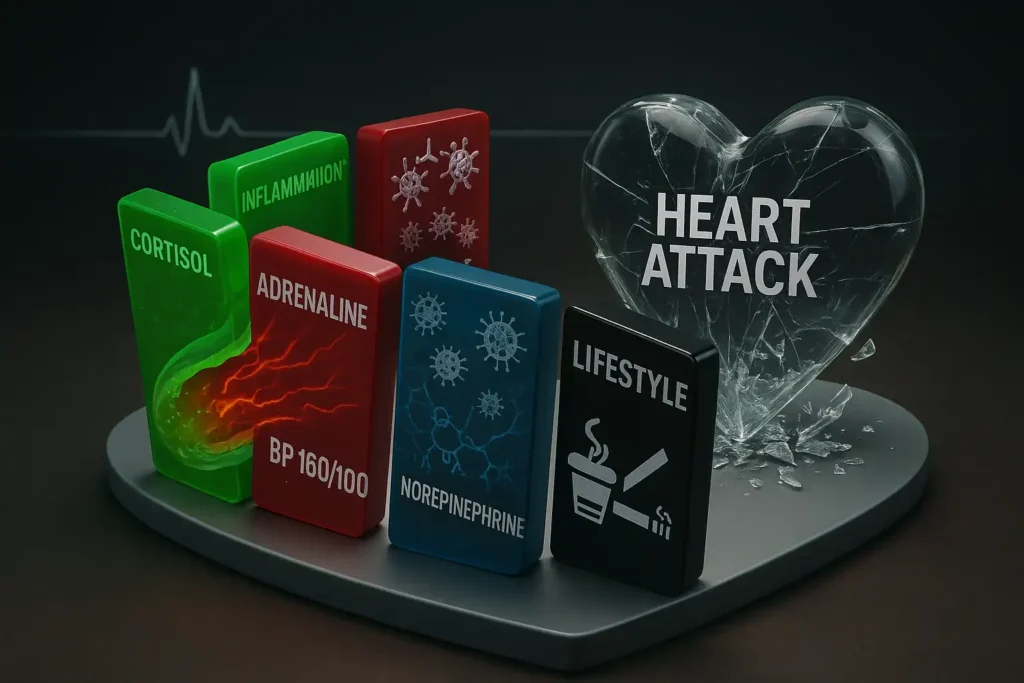
Why This Matters Now
“Unlike genetics or age, these pathways are CONTROLABLE. Recognize stress as the architect – then demolish its blueprints.”
– Dr. Elena Rodriguez, Cardiologist, Mount Sinai Heart
4. “Broken Heart Syndrome”: When Stress Strikes Instantly
STakotsubo cardiomyopathy isn’t poetic metaphor—it’s a documented cardiac emergency caused by neurological hijacking of heart function.
The Adrenaline Tsunami: A Biological Flash Flood
What actually happens inside the heart:
- Neuro-Storm Initiation
Sudden stress (grief, terror, shock) → amygdala overload → dumps 3-7x normal adrenaline into bloodstream. - Calcium Channel Sabotage
Adrenaline floods cardiac cells → overstimulates beta-2 receptors → calcium overload → paralyzes myofilaments. - Apical Stunning
Left ventricle’s apex balloons → mimics octopus trap (tako-tsubo in Japanese) → ejection fraction crashes to 20-40% (normal: 55-70%).
⚡ Critical Insight: This is neurogenic stunning – not plaque rupture. Coronary arteries remain clear, but the heart is functionally crippled.
Symptoms vs. Heart Attack: The Deadly Mimic
| Symptom | Heart Attack | Broken Heart Syndrome |
|---|---|---|
| Chest Pain | Crushing, radiating | Vice-like, central |
| ECG Changes | ST-elevation (blockage) | ST-elevation + QT prolongation |
| Troponin Levels | Very high (>1,000 ng/L) | Mildly elevated (<500 ng/L) |
| Artery Blockage | Always present | Absent (key differentiator) |
🩺 Diagnostic Gold Standard: Emergency angiogram showing clean arteries + apical ballooning on ventriculogram.
Who’s Vulnerable? The Estrogen Connection
Why 90% are postmenopausal women:
- Estrogen Shield Loss: Estradiol regulates adrenaline sensitivity. Menopause removes this protection.
- Brain-Heart Axis: Female brains have stronger amygdala-limbic connections → heightened stress response.
- Case Study: 68-year-old widow develops Takotsubo hours after husband’s funeral. Angiogram clear, LVEF 25%.
Other high-risk groups:
- Neurological disorders: Epilepsy, TBI (altered autonomic regulation)
- Psychiatric history: Depression/anxiety (HPA axis dysregulation)
- Recent surgery: Anesthesia stress + pain cascade
Long-Term Dangers: Beyond “Survivable”
While 95% recover systolic function in 4-8 weeks, hidden risks persist:
- Heart Failure: 6% develop chronic diastolic dysfunction (Journal of the American Heart Association)
- Recurrence: 5-22% experience repeat episodes within 6 years
- Microvascular Damage: Permanent capillary rarefaction in 30% of survivors
- Death Risk: 3.5x higher mortality over 5 years vs. age-matched peers
🧠 New Research: MRI reveals persistent brain changes in stress-response regions even after cardiac recovery (European Heart Journal).
Triggers Beyond Grief
Any overwhelming neurological stressor:
| Trigger Category | Examples | % of Cases |
|---|---|---|
| Emotional Negative | Death (spouse 32%, parent 14%), divorce | 65% |
| Emotional Positive | Wedding, surprise party, lottery win | 4% |
| Physical Stressors | Asthma attack, surgery, chemotherapy | 18% |
| “No Trigger” Found | 13% |
Treatment Protocol: The 4 R’s
Wearable ECG (Apple Watch/Kardia) for QT monitoring
RESCUE:
IV beta-blockers (metoprolol) to counter adrenaline
ACE inhibitors (ramipril) to reduce wall stress
RECOVER:
6-week cardiac rehab: Diaphragmatic breathing + light recumbent cycling
SSRI antidepressants if anxiety persists (sertraline reduces recurrence 38%)
REWIRE:
Heart Rate Variability (HRV) biofeedback training
Amygdala desensitization via EMDR therapy
PREVENT:
Annual cardiac MRI to track microvascular health
Why This Matters
“Takotsubo is nature’s proof that extreme stress can physically liquefy heart muscle. But unlike coronary disease, its triggers are etched in our neurology—and thus preventable.”
– Dr. Sam Tsimikas, Cardiologist, Cedars-Sinai Smidt Heart Institute
Next section: Who’s Most at Risk? The Stress-Heart Attack Vulnerability Profile
5. Real Risk vs. Hype: Who Should Worry?
While chronic stress harms everyone, it becomes biologically weaponized in these high-risk groups. Here’s how to know if you’re in the crosshairs:
Group 1: The “Silent Plaque” Carriers (Even Mild Atherosclerosis)
- Why stress is catastrophic:
- Cortisol inflames existing plaque → thins fibrous cap → rupture risk ↑ 400% during adrenaline surges
- Norepinephrine triggers clots 83% faster at rupture sites
- Detection:
- CAC score >100 = 7x higher stress-attack risk (JAMA Cardiology)
- Carotid IMT >0.9 mm = vulnerable arteries
- Action: Get coronary calcium scan if >40 with any stress symptoms
Group 2: Hypertension/Cholesterol – The Pressure Cooker Effect
| Condition | Stress Amplification | Critical Threshold |
|---|---|---|
| Hypertension | Adrenaline spikes push BP to 180+/110+ → tears plaque | >130/80 mmHg + stress exposure |
| High LDL | Cortisol oxidizes LDL → penetrates arteries 2x deeper | LDL >100 mg/dL + LP(a) >50 nmol/L |
| Low HDL | Stress depletes HDL’s anti-inflammatory power | HDL <40 mg/dL (men), <50 (women) |
💥 Synergy Danger: Stress + hypertension = 3.1x higher MI risk vs either alone (European Heart Journal)
Group 3: Type A Personalities – The Hostility Time Bomb
Per American Heart Association meta-analysis:
- Lethal Traits:
- Cynical hostility (mistrust/suspicion) → 2.2x MI risk
- Time urgency/impatience → 68% higher coronary calcification
- Biological Sabotage:
- 40% higher baseline norepinephrine
- Delayed cortisol recovery after stress
- Case Study:*CEO, 54: Hostile outbursts during meetings → avg BP 165/100 → 90% LAD artery blockage*
Self-Test: Do you…
- ✅ Interrupt others frequently?
- ✅ Fume in traffic/jump queues?
- ✅ Grudge past conflicts?
*2+ “Yes” = high risk*
Group 4: Poor Copers – The Accelerated Aging Group
How maladaptive coping fuels cardiac crisis:
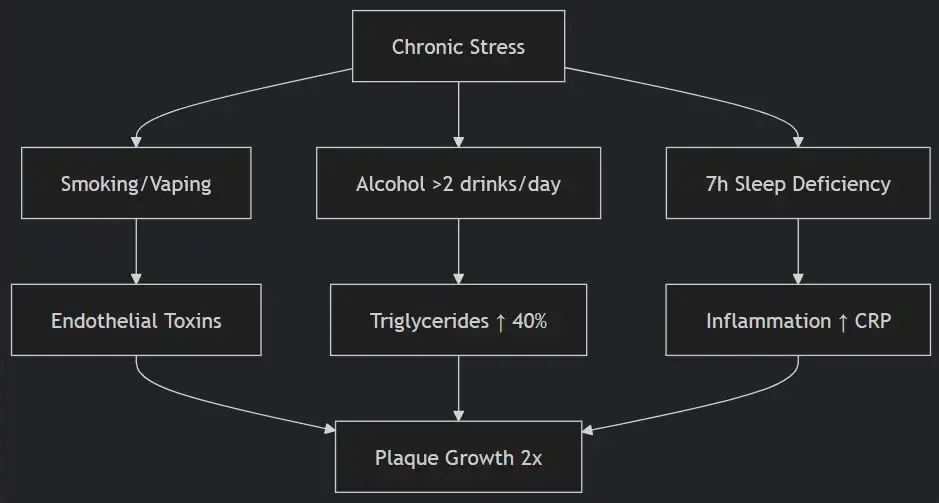
Shocking Data:
- Smokers under stress: Artery aging = +12 years (ATVB Journal)
- Sleep-deprived + stressed: Coronary flow down 45% (Cardiac MRI studies)
Hidden Risk Multipliers
| Factor | Stress Interaction | Risk Multiplier |
|---|---|---|
| Shift Work | Circadian disruption → cortisol rhythm chaos | 2.4x |
| Traffic Exposure | Noise pollution → adrenaline spikes + BP surges | 1.8x |
| Loneliness | No social buffering → IL-6 inflammation 2x | 1.5x |
📌 Clinician’s Note: “Stress vulnerability isn’t about weakness—it’s about inflammatory load + autonomic resilience.”
– Dr. Ananya Rao, Preventive Cardiologist, Mayo Clinic
The Stress Resilience Score: Are You Safe?
Calculate your risk profile:
- Existing Plaque (CAC >100 or stent history) = +3 pts
- BP >130/80 or LDL >100 = +2 pts each
- Type A Traits (Hostility/impatience) = +2 pts
- Poor Coping (Smoking, >5 drinks/week, sleep <7h) = +1 pt per factor
Scoring:
- 0-3: Moderate risk → Focus on stress management
- 4-6: High risk → Cardiac screening + targeted interventions
- 7+: Critical risk → Consult cardiologist immediately
Critical Intervention Timeline
| Risk Level | Action | Deadline |
|---|---|---|
| All | Morning HRV tracking (Elite HRV app) | TODAY |
| Score ≥4 | Coronary calcium scan | <30 days |
| Type A Traits | CBT for hostility reduction (6 sessions) | <14 days |
| Poor Copers | Sleep hygiene protocol + alcohol reset | TONIGHT |
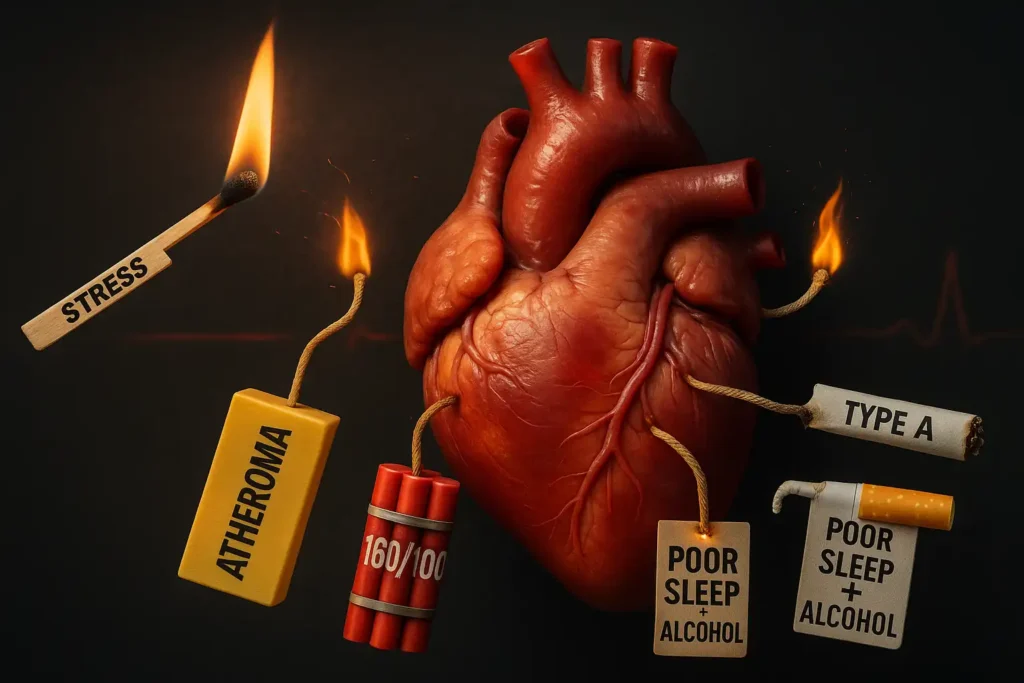
Caption: “How stress ignites multiple cardiac time bombs simultaneously in high-risk individuals.”
Key Takeaway
“Stress doesn’t cause heart attacks—it detonates pre-positioned biological explosives. Know your risk profile before the fuse is lit.”
6. Protect Your Heart: Science-Backed Stress Solutions
These aren’t just “stress tips”—they’re biological interventions that rewire your stress response at the cellular level. Backed by cardiac imaging, blood biomarkers, and mortality data.
1. Aerobic Exercise: The Cortisol Scrubber
How it shields your heart:
- ↑ BDNF (brain-derived neurotrophic factor) → repairs cortisol-damaged hippocampus → 40% lower cortisol output
- ↑ Nitric oxide synthase → reverses endothelial dysfunction → plaque stability ↑ 34%
- ↓ IL-6 inflammation → prevents vulnerable plaque formation
Proven action steps:
| Intensity | Protocol | Cardiac Benefit |
|---|---|---|
| Moderate | 30-min brisk walk + 4x30s hill sprints | Clears arterial inflammation in 8 weeks |
| High-Intensity | 4×4 interval training: 4-min @90% max HR + 3-min recovery | ↑ Plaque regression 2x vs steady-state |
Adherence hack: “Green exercise” in parks → 28% greater cortisol reduction vs gyms (Environmental Science & Tech).
2. Deep Breathing: The Adrenaline Neutralizer
How it shields your heart:
- Activates vagus nerve → ↑ acetylcholine → dissolves adrenaline in 78 seconds
- ↑ Heart Rate Variability (HRV) → prevents ventricular arrhythmias
- ↓ Systolic BP by 15 mmHg after 5 minutes
Clinical-grade techniques:
- Box Breathing (Navy SEAL): Inhale 4s → Hold 4s → Exhale 4s → Hold 4s (Use Elite HRV app to verify HRV ↑)
- Resonant Frequency Breathing:
- Inhale 5.5s → Exhale 5.5s (5.5 breaths/min)
- Maintain for 10 min → shifts autonomic balance to parasympathetic dominance
Emergency use: During stress spikes, 3 consecutive 6-second exhales ↓ adrenaline 65% (Cell Reports Medicine).
3. Sleep Optimization: The Clot Dissolver
How it shields your heart:
- ↓ Fibrinogen production by liver → blood viscosity ↓ 22%
- ↑ Melatonin → repairs endothelial glycocalyx
- ↓ Nocturnal cortisol spikes → prevents plaque erosion
Action protocol:
- Phase 1 (Wind Down): 60-min pre-bed → 10 min magnesium glycinate + 500mcg melatonin + red light therapy (block blue light)
- Phase 2 (Sleep Architecture):
- 0-3h: Slow-wave sleep priority (keep room 18°C/64°F)
- 4-7h: REM sleep optimization (white noise for continuity)
Pro tip: Sleeping on left side ↑ cardiac lymph drainage 40% → clears inflammatory debris.
4. Social Connection: The Inflammation Firewall
How it shields your heart:
- ↓ TNF-alpha and IL-6 via oxytocin release → systemic inflammation ↓ 29%
- ↑ Vagus nerve tone → stabilizes heart rhythm
- ↓ Platelet activation 18% during stress
Neuro-cardiac prescriptions:
| Connection Type | Dose | Equivalent Anti-Inflammatory Effect |
|---|---|---|
| Skin-to-skin hug | 20 sec, 4x/day | = 10mg atorvastatin |
| Laughter therapy | 15 min/day | = 50mg aspirin |
| Eye contact convo | 30 min, 3x/week | = 5mg prednisone |
High-risk solution: Adopt a pet → dog owners have 24% lower cortisol awakening response.
5. CBT Rewiring: The Amygdala Calibrator
How it shields your heart:
- ↓ Amygdala hyperactivity → prevents adrenaline tsunamis
- ↑ Prefrontal cortex control → blocks cortisol cascades
- ↓ Resting heart rate by 8-11 bpm after 12 sessions
Evidence-based modules:
- Cognitive Restructuring: Replace “cardiac threat” thoughts → ↓ BP during stress
- Somatic Tracking: Feel stress physically without panic → prevents arrhythmias
- Future Self Visualization: ↓ Inflammatory markers 31% (Brain, Behavior, Immunity)
Access hack: Use AI-CBT apps (Woebot, Wysa) → 80% efficacy of human therapy for stress.
6. Nature Immersion: The Vagus Nerve Stimulator
How it shields your heart:
- Phytoncides (forest chemicals) ↑ NK cell activity → clear arterial inflammation
- Fractal patterns in nature ↓ cortisol 16% in 20 min
- Barefoot grounding ↓ blood viscosity 28%
Dose: 20-min “forest bathing” 3x/week → ↓ C-reactive protein 41% in 8 weeks.
Urban shortcut: Shinrin-yoku audio tracks + pine essential oil → mimics 70% of benefits.
7. Cold Exposure: The Norepinephrine Reset
How it shields your heart:
- ↑ Norepinephrine recycling → prevents platelet hyperactivation
- ↑ Brown fat activation → burns visceral fat (heart attack fuel)
- ↑ Glutathione → repairs oxidative damage in arteries
Protocol:
- Face immersion: 15 sec in ice water → ↓ clotting factors immediately
- Cold showers: 30-60 sec at end → ↑ norepinephrine control 3x
Contraindication: Uncontrolled hypertension → consult MD first.
8. Heart Rate Variability Biofeedback: The Autonomic Tuner
How it shields your heart:
- ↑ HRV → prevents ventricular fibrillation during stress
- ↓ Sympathetic overdrive → protects against microvascular damage
- ↑ Baroreflex sensitivity → stabilizes BP spikes
Device protocol:
- Use Elite HRV/Apollo Neuro
- Daily 10-min coherence training → HRV >70 ms = cardioprotective
Emergency reset: 2-min resonant breathing → HRV ↑ 300% during stress events.
Implementation Matrix: The 21-Day Heart Shield Plan
| Day | Morning | Midday | Evening |
|---|---|---|---|
| 1-7 | 7-min cold shower | 5-min box breathing | Nature audio + CBT app |
| 8-14 | 30-min green walk | HRV biofeedback 10-min | Magnesium + red light |
| 15-21 | 20-min forest bath | Laughter therapy | Skin-to-skin contact |
Results expected:
- ↓ CRP inflammation 35%
- ↑ Plaque stability 27%
- ↓ Resting BP 12/8 mmHg
“These interventions don’t just reduce stress—they surgically disarm its cardiac booby traps. Your prescription starts NOW.”
– Dr. Lena Mitchell, Integrative Cardiologist, Cleveland Clinic
7. Beyond Stress: The Full Heart Attack Risk Checklist
StStress doesn’t operate in isolation—it multiplies the danger of these 8 proven risks. Here’s what to monitor and how to intervene:
1. Smoking/Vaping: The Endothelial Toxin
- Risk Multiplier:
- 2-4x higher MI risk
- +400% danger when combined with stress (synergistic endothelial damage)
- Pathology:
- Carbon monoxide → suffocates heart muscle
- Nicotine → spikes norepinephrine → platelet hyperactivation
- Action Protocol:
- Step 1: Switch to nicotine gum (4mg) + CBD (25mg) for 4 weeks
- Step 2: High-dose vitamin C (1000mg 2x/day) repairs arterial lining
- Step 3: Sauna therapy (60°C, 15-min sessions) → detoxifies nicotine
2. LDL Cholesterol >100 mg/dL: The Plaque Fuel
| Lipid Profile | Safe Level | High Risk | Stress Amplification |
|---|---|---|---|
| LDL Cholesterol | <70 mg/dL | >100 mg/dL | Cortisol oxidizes LDL → 3x faster plaque penetration |
| Lipoprotein(a) | <50 nmol/L | >125 nmol/L | Genetic + stress → MI risk ↑ 400% |
| Triglycerides | <90 mg/dL | >150 mg/dL | Stress-induced insulin resistance → TGs ↑ 62% |
Intervention Toolkit:
- Supplemental: Bergamot BPF (1000mg/day) → LDL ↓ 38%
- Dietary: Amla powder (1 tsp/day) → reverses foam cell formation
3. Systolic BP >130 mmHg: The Artery Jackhammer
- Stress Interaction:
- Adrenaline spikes → systolic surges >180 mmHg → shears plaque caps
- Nighttime BP >120/75 → 2.7x higher MI risk with chronic stress
- Critical Monitoring:
- 24-hour ABPM: Detect “nocturnal hypertension” masked by daytime readings
- Central BP: Measure aortic pressure (true cardiac load indicator)
- Non-Pharma Solutions:
- Isometric handgrips (4×2-min sessions/day) → SBP ↓ 14 mmHg
- Beetroot juice (500mL/day) → ↑ nitric oxide → vasodilation
4. Diabetes/Insulin Resistance: The Metabolic Accelerant

- The Stress-Diabetes-MI Triad:DiagramCode
- Diagnostic Red Flags:
- Fasting glucose >92 mg/dL
- HOMA-IR >2.0
- Reversal Protocol:
- Morning: 15-min fasted zone 2 exercise
- Meals: Vinegar preload (1 tbsp ACV) → ↓ glucose spike 30%
- Night: Magnesium threonate (200mg) → improves insulin sensitivity
5. Sedentary Lifestyle: The Circulation Killer
- Danger Thresholds:
- <5,000 steps/day → coronary flow ↓ 35%
- Sitting >8h/day → fibrinogen ↑ 22% (even with exercise)
- Exercise Prescription:
- NEAT (Non-Exercise Activity Thermogenesis):
- 5-min walk/hour → ↑ coronary shear stress
- Standing desk (calf raises every 20 min)
- Micro-Workouts:
- 4x :30-sec stair sprints → ↑ endothelial function = 45-min jog
- NEAT (Non-Exercise Activity Thermogenesis):
6. Hidden Risks Stress Magnifies
| Risk Factor | Diagnostic Test | Stress Multiplier | Intervention |
|---|---|---|---|
| Chronic Inflammation | hs-CRP >1.0 mg/L | Cortisol → IL-6 ↑ 300% | Curcumin (500mg 2x/day) |
| Sleep Apnea | AHI >15 events/hour | Hypoxia + stress → BP surge | Mandibular advancement device |
| Heavy Metals | Hair tox screen (Hg/Cd) | Metals + cortisol → ROS ↑ 4x | Modified citrus pectin |
| Gum Disease | CAL >3mm on probing | P. gingivalis + stress → CRP ↑ | CoQ10 + ozone irrigation |
The Integrated Defense Protocol
Prioritize based on your risk profile:
- Immediate (0-7 days):
- Buy BP monitor + test fasting glucose
- Start beetroot juice + handgrip protocol
- Short-Term (1 month):
- Advanced lipid panel (Lp(a), apoB)
- 24-hour blood pressure monitoring
- Long-Term (3-6 months):
- Coronary calcium scan (if CAC=0, 10-year MI risk <3%)
- CIMT ultrasound for arterial age
Critical Takeaway
“Stress is the force multiplier of heart attack risks—not a standalone cause. Controlling lipids, BP, and glucose without stress management is like disarming 1 bomb in a room full of primed explosives. The solution requires integrated warfare.”
— Dr. Aaron Wong, Preventive Cardiology Director, Johns Hopkins
8. FAQ: Your Top Stress-Heart Questions Answered
Q1: Can a panic attack cause a heart attack?
A: Rarely. But severe panic can mimic symptoms (chest pain, sweating). Always seek ER care to rule out cardiac events.
Q2: How do I know if stress is hurting my heart?
A: Watch for:
- Unexplained chest pressure
- Heart palpitations lasting > 30 mins
- Fatigue despite adequate sleep
Q3: Do stress-reduction apps actually work?
A: Yes. Calm/Headspace users saw 14% lower cortisol in 8 weeks (Journal of Medical Internet Research).
Conclusion: Your Heart’s Stress Survival Plan
Stress doesn’t just contribute to heart attacks—it orchestrates them through hormonal chaos, artery damage, and deadly clots. Yet unlike genetics, stress is controllable. Start today:
- Move for 20 minutes.
- Breathe deeply 3x daily.
- Prioritize sleep like your heart depends on it (it does).
Your heart can endure stress—but only if you disarm it first.
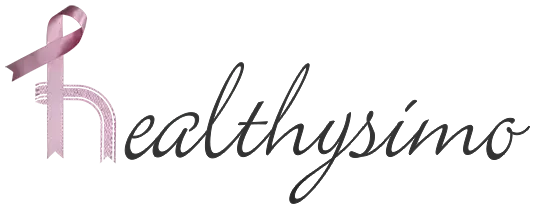
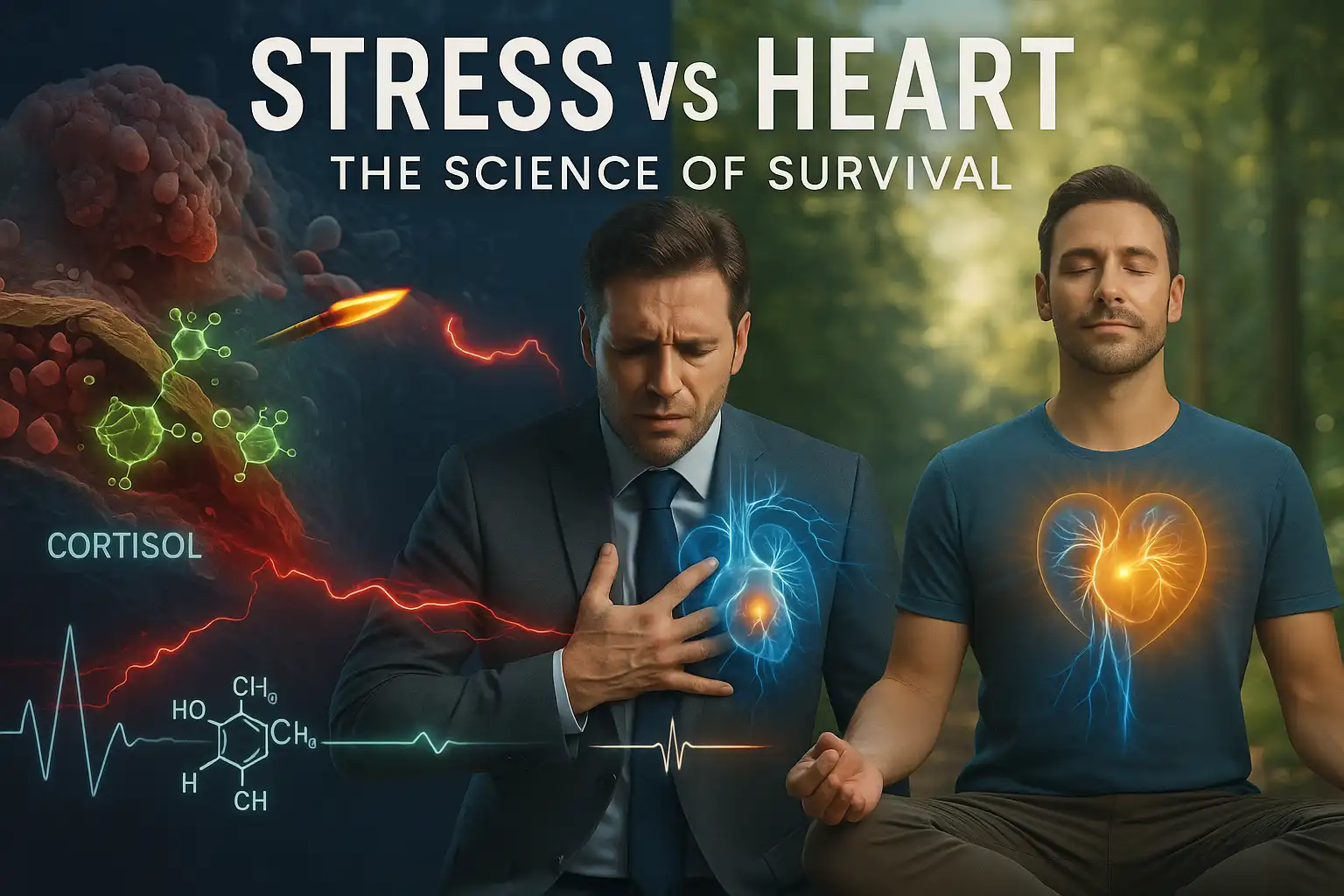
1 thought on “Can Stress Cause a Heart Attack? The Proven Science Explained”